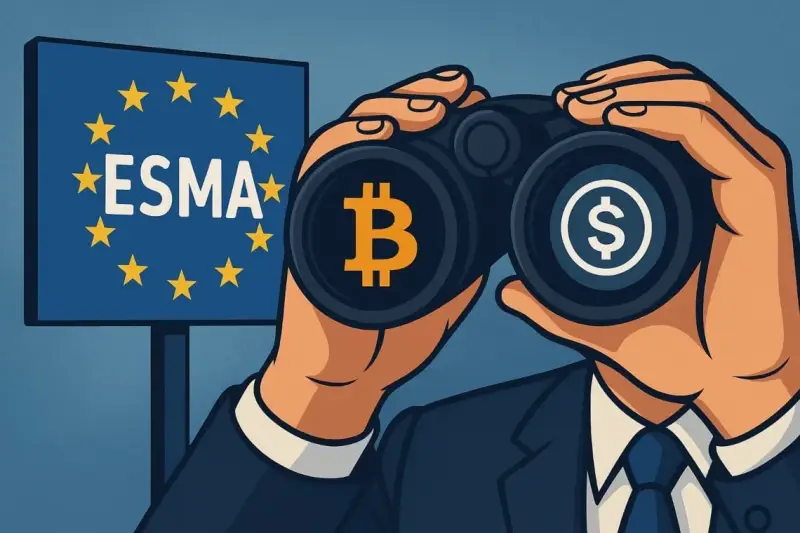Introduction
The European Securities and Markets Authority (ESMA) has announced an expansion of its crypto oversight framework, signaling stricter scrutiny of digital assets, including fan tokens. This regulatory move aims to enhance investor protection, mitigate market manipulation risks, and ensure transparency in increasingly popular blockchain-based financial products. Football fan tokens, which allow holders to vote on club decisions, access exclusive content, or engage in gamified experiences, are now under closer regulatory evaluation, raising questions about their operational and legal frameworks.
ESMA’s Expanded Mandate
ESMA’s expansion of authority covers a broader range of crypto assets and service providers, requiring enhanced compliance, disclosure, and reporting. Cryptocurrency issuers and exchanges must adhere to stricter standards related to transparency, risk management, and anti-money laundering (AML) procedures. Fan tokens, though often marketed as engagement tools rather than securities, fall into the regulatory gray area. ESMA’s oversight emphasizes that tokens providing financial benefits, voting rights with economic implications, or tradable value may be subject to formal financial regulation.
Implications for Football Clubs
European football clubs issuing fan tokens could face operational and compliance challenges. Regulatory scrutiny may require auditable financial reporting, disclosure of token mechanics, and investor protection measures. Clubs such as Juventus, PSG, and Manchester City, which have integrated fan tokens into their engagement strategies, may need to adjust issuance, marketing, and trading platforms to comply with ESMA guidelines. Legal teams and compliance officers will need to assess whether existing token structures fall under securities or digital asset regulations, and implement measures to mitigate potential regulatory exposure.
Market Context: Fan Token Popularity
Fan tokens have surged in popularity across Europe, enabling clubs to monetize fan engagement while providing interactive experiences. Platforms like Socios and Chiliz have facilitated widespread adoption, with trading volumes reaching significant levels during major tournaments and season launches. While these tokens offer engagement benefits, their speculative trading nature, price volatility, and tradability on secondary markets have drawn attention from regulators concerned about investor protection and market integrity. ESMA’s expanded oversight may introduce reporting obligations and structural adjustments to these fan token ecosystems.
Regulatory Compliance and Risk Management
Clubs issuing fan tokens will likely need to implement robust compliance frameworks, including KYC and AML protocols for participants, transparent disclosure of token economics, and risk mitigation measures for speculative trading. Legal clarity on the classification of tokens, whether utility, security, or hybrid, will dictate the extent of reporting and governance required. Regulatory compliance may increase operational costs but also enhances institutional credibility and provides a safeguard against potential fines or enforcement actions.
Potential Impact on Fan Engagement
Stricter rules could influence the design of fan token programs. Clubs may adjust token functionality to prioritize engagement over tradability, reducing economic risk while maintaining interactive experiences. Voting rights, gamified rewards, and exclusive content can continue to foster participation, but financial incentives or market speculation might be limited under regulatory guidance. The challenge for clubs will be balancing fan experience, revenue generation, and regulatory compliance without undermining token appeal.
Technological Considerations
ESMA’s oversight emphasizes the need for auditable blockchain infrastructure. Clubs and platforms may need to implement enhanced transaction monitoring, automated compliance reporting, and secure wallet integrations. Smart contract transparency, immutable ledgers, and real-time reporting can help align fan token ecosystems with regulatory expectations. Technology providers supporting clubs will play a critical role in enabling compliant issuance, secondary market management, and secure trading environments.
Investor and Market Implications
Stricter oversight may reduce speculative activity in fan token markets, influencing liquidity and trading volumes. While some investors may be deterred by compliance-driven limitations, regulatory clarity could attract institutional participation, corporate partnerships, and sponsorship collaborations. Well-regulated fan token programs may also enable integration with other financial services, stablecoins, or loyalty platforms, expanding their utility beyond the current engagement-focused model.
Global Relevance and Comparative Practices
ESMA’s approach reflects a broader global trend of regulators scrutinizing fan tokens and blockchain-based engagement tools. Similar initiatives in Asia, North America, and the Middle East emphasize investor protection, transparency, and operational governance. European clubs active in international markets must navigate cross-border regulatory differences, ensuring fan token issuance complies with both local and European standards. Harmonizing global practices will be key to sustainable fan token ecosystems and long-term adoption.
Strategic Outlook for Clubs and Platforms
Moving forward, clubs must evaluate legal structures, compliance frameworks, and token economics in alignment with ESMA guidelines. Platforms facilitating token issuance, trading, and engagement will need to provide scalable compliance solutions and audit capabilities. Strategic partnerships with financial institutions, blockchain auditors, and legal advisors may become increasingly necessary. Clubs adopting proactive measures will not only reduce regulatory risk but also enhance trust among fans, investors, and sponsors, securing sustainable growth in digital fan engagement.
Future Scenarios
ESMA’s expanded oversight may result in hybrid token models, combining engagement with regulated financial characteristics. Clubs might adopt Euro-pegged stablecoin integration, treasury-backed fan tokens, or blockchain loyalty programs that meet investor protection standards. While speculative trading may be curtailed, the regulatory framework could create a more transparent and sustainable ecosystem, fostering long-term adoption by both casual fans and institutional partners.
Conclusion
The expansion of ESMA oversight into fan tokens represents a critical juncture for European football clubs and digital asset platforms. While stricter rules pose compliance and operational challenges, they also offer an opportunity to professionalize fan token issuance, enhance investor protection, and strengthen market credibility. Clubs, platforms, and regulators will need to collaborate closely to ensure that fan tokens continue to deliver engagement, revenue, and innovation while adhering to evolving regulatory standards. As the European market matures, compliance and innovation will become intertwined, shaping the future of football fan token ecosystems.




